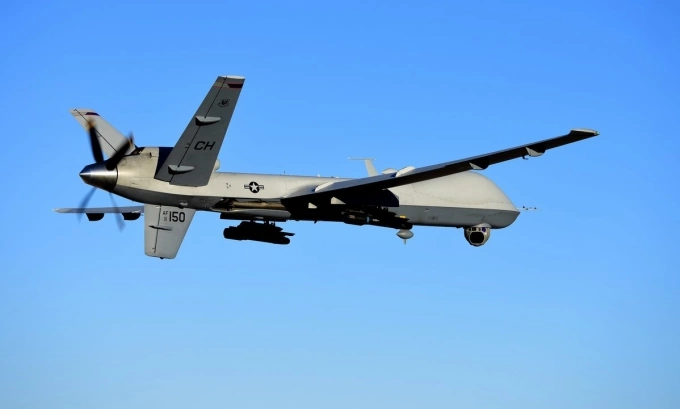
End of an Era? America’s MQ-9 Reaper Faces a Growing Threat
Once the symbol of U.S. drone supremacy, the MQ-9 Reaper may be nearing the end of its uncontested reign over global skies. As threats evolve and air defenses strengthen, the iconic drone that helped define modern warfare is facing an uncertain future.
The MQ-9 Reaper, along with its predecessor, the MQ-1 Predator, has long been a cornerstone of America’s counterterrorism strategy following the 9/11 attacks. While the MQ-1 was retired by the U.S. Air Force in 2018, the more advanced MQ-9 remains in active service with the U.S. and seven allied nations.
By the end of 2021, over 300 Reapers had been produced, each costing approximately $30 million. The MQ-9 boasts a flight range of over 1,900 km, a service ceiling of 15 km, and a payload capacity of 1.7 tons—including high-resolution sensors and up to eight precision-guided missiles. Perhaps its greatest asset is its 27-hour endurance, allowing for prolonged surveillance or strike missions without risking American lives.
Between September 2007 and July 2008, MQ-9s flew over 3,800 hours in Afghanistan alone. Beyond the Middle East, Reapers have been active in Europe and Africa, supporting reconnaissance and targeted strike operations.
A New Battlefield, A New Reality
“Predators and Reapers once dominated conflict zones—they became the face of the UAV era, where war could be waged remotely,” wrote defense analyst Michael Peck for Business Insider. But today’s skies are no longer safe.
According to Aviation Safety Network, at least 107 Reapers have been lost due to shootdowns or crashes—71 of them completely destroyed.
In October 2017, Houthi rebels in Yemen shot down an armed MQ-9 over Sanaa. Two years later, a U.S. Reaper was taken down by a Russian-made Pantsir-S1 air defense system in Libya, allegedly with assistance from the Wagner Group.
In August 2020, the Pentagon reported two Reapers were lost in a midair collision over Syria. However, local sources claimed one was actually shot down by Turkish fighter jets or Ankara-backed rebels.
In a high-profile incident in March 2023, a Russian Su-27 fighter damaged a U.S. MQ-9 over the Black Sea by dumping fuel onto it, causing it to crash. Similar harassment tactics have been reported over Syria, with Russian jets damaging Reaper propellers by releasing flares in close proximity.
Since launching attacks on Red Sea shipping in support of Gaza, Yemen’s Houthi group has claimed to down 22 Reapers since October 2023—seven of them in less than two months during the U.S.-led Operation Rough Rider. American officials have confirmed at least 17 MQ-9 losses in Yemen during that timeframe, totaling over $500 million in hardware.
MALE Drones Losing Their Edge
The MQ-9 belongs to the class of Medium Altitude Long Endurance (MALE) drones, which are increasingly vulnerable in today’s high-threat environments. In Ukraine, Turkish-made Bayraktar TB2 drones—once hailed as game-changers—were instrumental early in the war but have since vanished from the battlefield due to improved Russian air defenses and electronic warfare.
Similarly, Israel’s Hermes drones have suffered losses to Hezbollah’s surface-to-air missiles in Lebanon.
Why the decline? More combatants now have access to modern air defenses capable of targeting slow, high-flying drones. “They lack the speed and agility of fighter jets and aren't equipped with flares or jamming systems, yet cost nearly as much as manned aircraft,” noted Peck.
Still, MALE drones offer unmatched long-endurance surveillance using high-precision sensors—when they survive long enough to do so. As Robert Tollast of the Royal United Services Institute wrote, these drones are invaluable “only when they aren't being shot down.”
Looking Ahead: Adapt or Fade Out
Some experts suggest replacing MALE drones with smaller, cheaper drones—like those widely used in Ukraine and the Middle East—that cost less than $200,000 and can be deployed in swarms. But these systems have limitations: shorter range, lower altitude, smaller payloads, and flight times limited to just a few hours.
That’s why the U.S. isn’t phasing out the MQ-9 just yet. Instead, it’s upgrading the fleet for improved survivability. The MQ-Next program, aimed at developing a stealth-capable successor by the 2030s, promises radar-evading designs and cutting-edge systems.
“Unless a breakthrough allows small drones to match the performance of MALE-class UAVs, the U.S. military will need to keep developing aircraft like the Reaper to maintain persistent battlefield surveillance,” Peck concluded.
(Source: Business Insider)
Hello Shuttle will strive to bring the latest updates. At the end of the day.
Are you looking for reliable airport and cruise port transfer services in Los Angeles?
We offer professional, safe, and punctual transportation from
Los Angeles Airport - LAX
Long Beach Airport - LGB
John Wayne Airport - SNA
San Pedro cruise port
Long Beach cruise port
Disneyland
and other destinations.
Let us make your journey stress-free and comfortable with our dedicated drivers and high-quality vehicles. Book now for the perfect travel experience at www.helloshuttle.com or call 944-800-5678!


